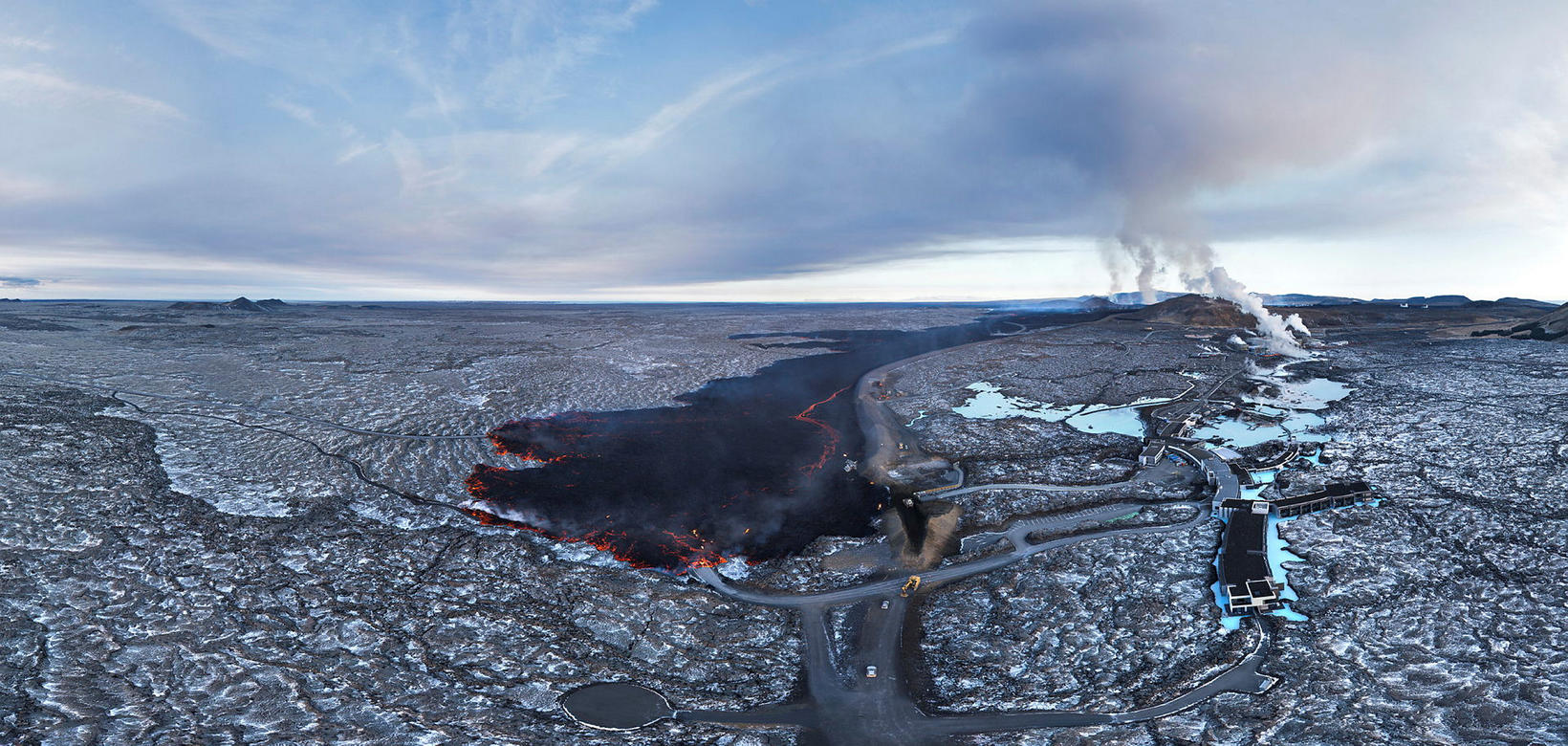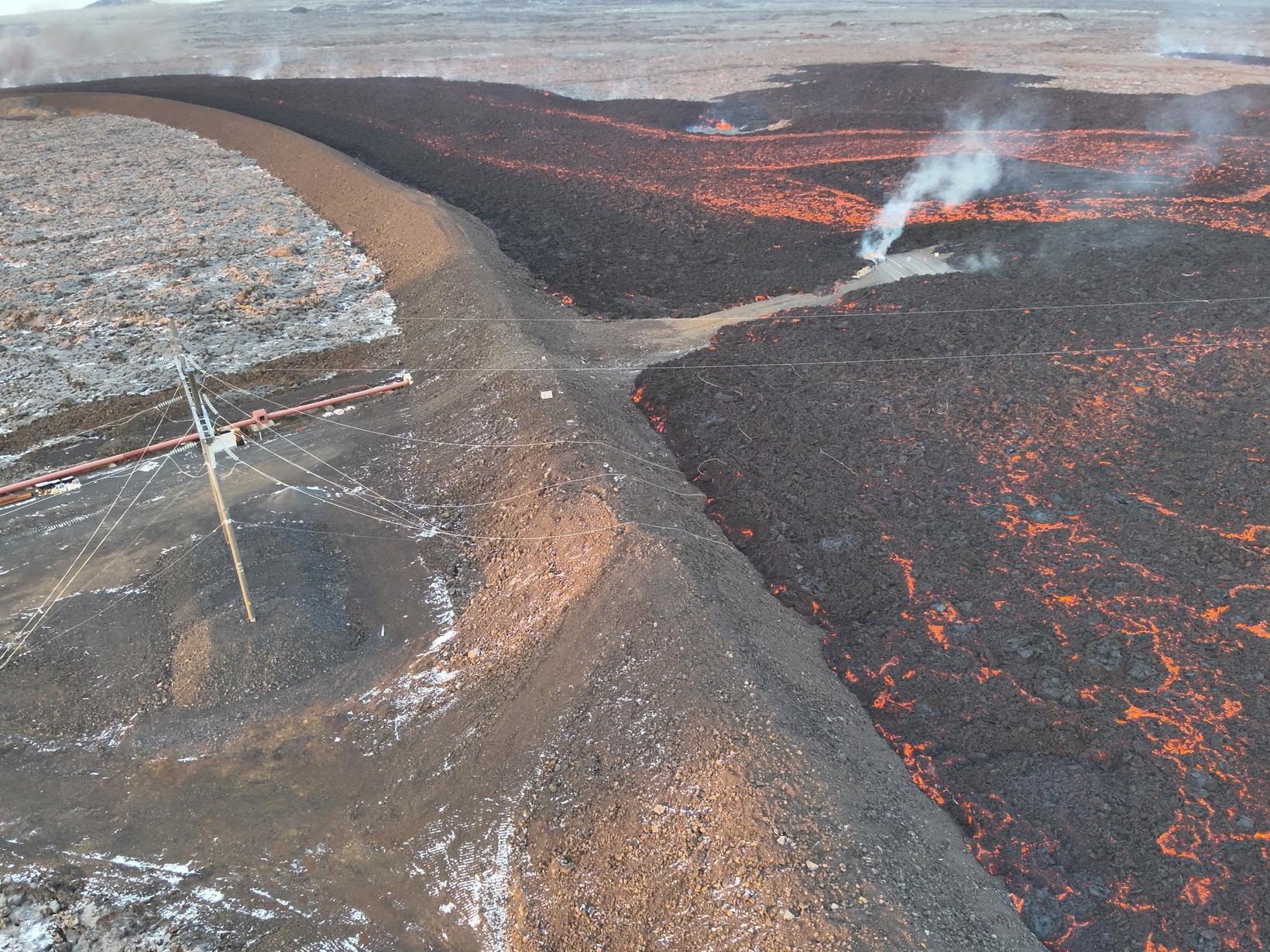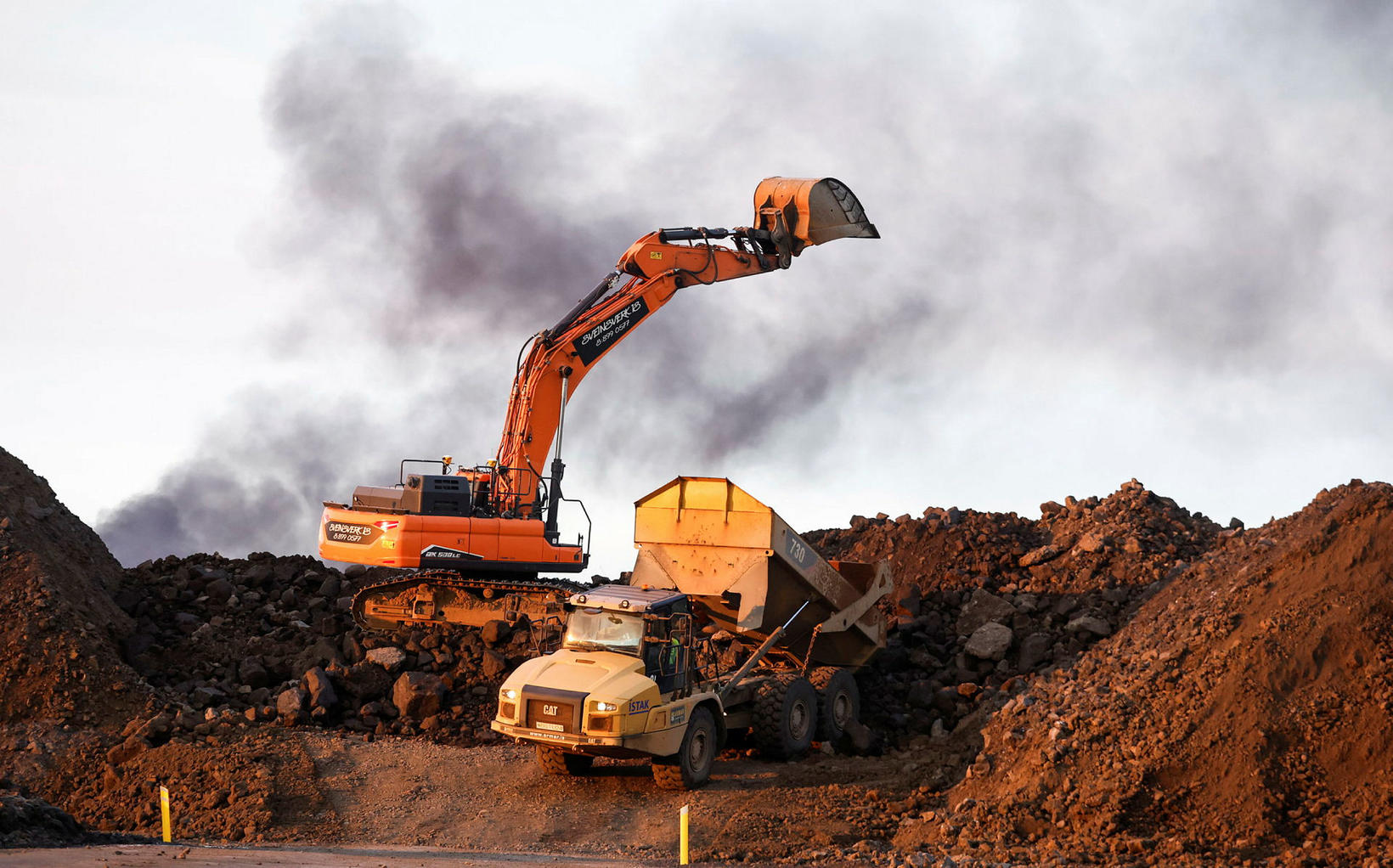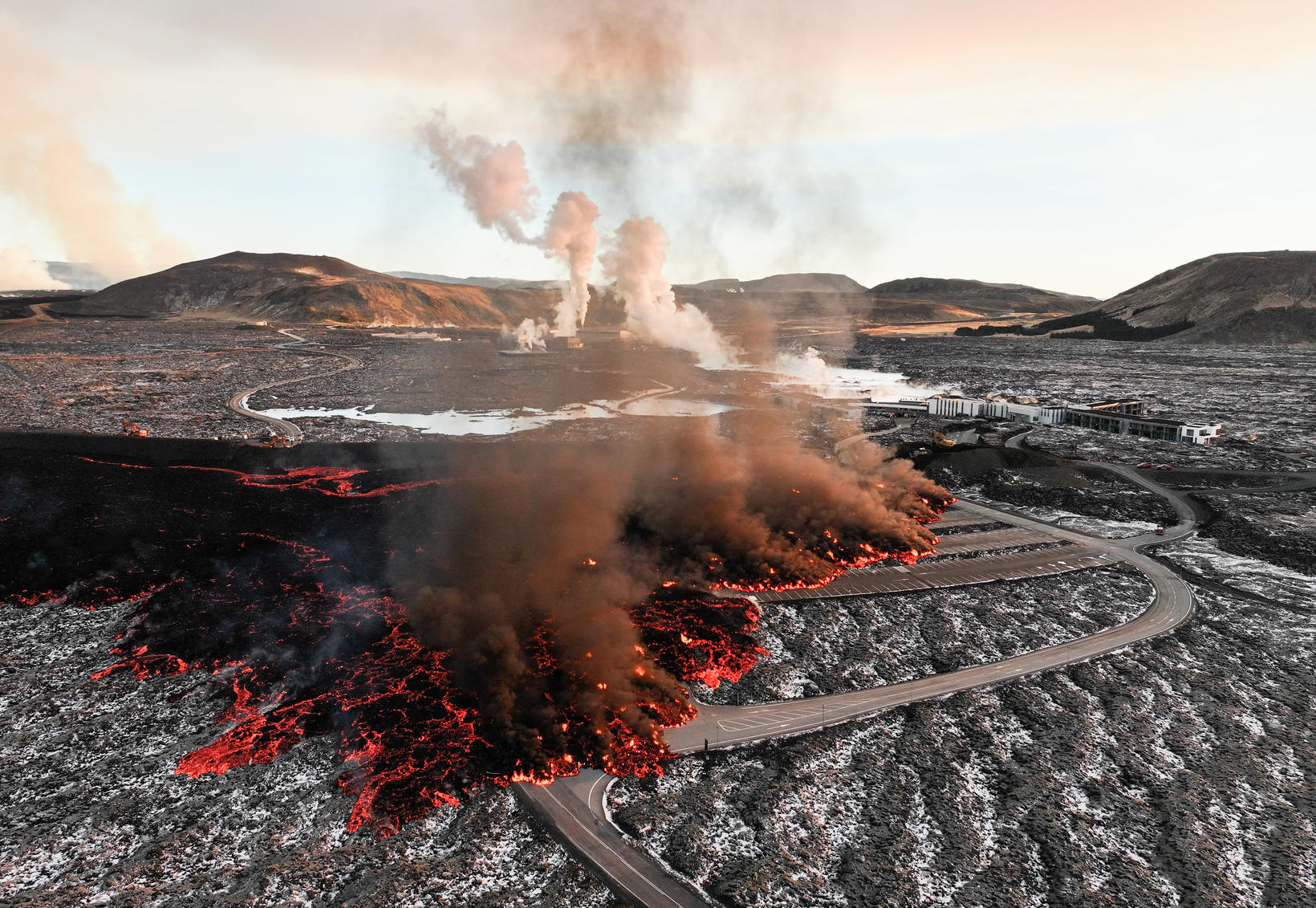Photos: Natural threshold is taking over
View across the Blue Lagoon, the new lava, the defense wall, and a natural threshold that directs the lava to the west. The photo was taken with a 360° camera and is therefore a wide image and the proportions are slightly distorted. Next in the photo is the road that crosses the dam, but you can see that an old lava field lies just beyond it and to the west. The lava field acts as a natural threshold and pushes the lava to the west. Photo/Jakob Krisian Vegerfors
The lava flow that is now flowing along the defense walls and yesterday crossed the parking lots at the Blue Lagoon has reached a natural threshold just south of where the parking lots were and are starting to flow to the west.
According to lava flow models, the lava will likely continue to spread, but there are no infrastructures there. The defense walls and the fills that were worked on yesterday appear to have held, but work is underway to raise the fills in the gaps in the defense walls.
"The defense walls have held as expected," says Ari Guðmundsson, one of the supervisors of the defense walls on the Reykjanes Peninsula and an employee of Verkís, in an interview with mbl.is.
A picture from Landsnet shows how the lava flowed along the defense wall before reaching the parking lot at the Blue Lagoon. Photo/Landsnet
No risk of the lava crossing the defense walls
He says that gaps on Bláalónsvegur Road and at the lagoon's parking lot have been closed. "There is no danger as it stands now that the lava flow will enter, but we are, however, raising and strengthening the closure to make sure."
When looking at drone images of the area, including the accompanying pictures that Jakob Kristian Vegerfors took in the third hour yesterday, you can see the third road into the area (where the yellow excavator stands across the road).
Guðmundsson says that this road, however, does not go through a gap but rather goes over the defense wall and that there the lava has reached a natural threshold.
By this, he means that there is an increase in the land and if you look at the image to the west you can see that it is an old lava tongue that is raising the land somewhat.
Because of this, lava flow models show that the lava will now flow to the west, as it has begun to do, and spread out there.
Heavy-duty construction machinery has been used to fill in the gaps in the defense wall. mbl.is/Eggert Jóhannesson
Large and powerful equipment
There are at least four excavators and a bulldozer on site. All of these are very large and powerful pieces of equipment, and it is not possible to bring many more machines.
"We believe we have enough equipment to handle this," he says, adding that a significant amount of material has been brought to the site to be able to quickly fill the gap.
It turned out to be a wise decision because Guðmundsson says that the lava from this eruption was very thin and flowed quickly. People had assumed that this could happen and the preparations were made accordingly. This still meant that the response had to be faster today than often before.
The car park at the Blue Lagoon was covered in lava yesterday. The lagoon itself, however, is within defense walls and was not damaged. mbl.is/Eggert Jóhannesson
It takes 1-2 weeks from the end of the eruption before entering the lava field
When asked what will happen when work on the gap is completed, Guðmundsson says that it depends on the development of the eruption.
When previous eruptions have ended, it has worked to build roads over the newly flowed lava, and he says that it generally takes about 1-2 weeks from the end of the eruption until it is possible to take construction equipment into the lava.
“But it depends on how thick or thin the lava is.” He notes that no decisions have been made about the best route back into the area and that this will depend on the development of the eruption, but that it is very good to have escape routes both to the south and north from Svartsengi.













